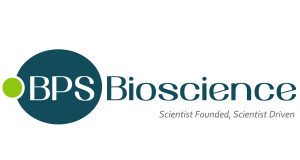Bimagrumab
Bimagrumab
SKU
BPS82876-2
Packaging Unit
5 mg
Manufacturer
BPS Bioscience
Availability:
loading...
Price is loading...
Products from BPS Bioscience require a minimum order value above 400€
Assay Conditions: Measured by its binding ability in a functional ELISA.
Background: Activin A receptor type IIB, also known as ACVR2B, together as a complex with Activin A receptor type I (ACVRI), form a transmembrane receptor with serine/threonine kinase activity. Upon binding of activin, the kinase activity of the receptor is activated, SMAD2 (mothers against decapentaplegic homolog 2) and SMAD3 are phosphorylated, form a complex with SMAD4 and translocate to the nucleus, regulating gene expression. Activin A can be found in macrophages, dendritic cells, and neutrophils, playing a role in cell maturation and activation. It is involved in inflammation and autoimmune disorders, such as SLE (systemic lupus erythematosus), RA (rheumatoid arthritis), and atopic dermatitis. It is also involved in bone formation. The use of fusion protein blockers of the activin signaling pathways, that serve as sinks for activin A and other TGFβ (transforming growth factor beta) members, is being explored for the treatment of pulmonary hypertension, chemotherapy-induced anemia, and osteoporosis.
Biological Activity: Immobilized Human IL-33 Protein can bind Tozorakimab, the EC50 for this effect is 3.21 ng/ml.
Description: Bimagrumab (Anti-ACVR2B Reference Antibody) is a human monoclonal antibody that blocks activin type II receptor (ActRII), with KDs of 1.7 pM and 434 pM for human ActRIIB and ActRIIA, respectively.1,2 Bimagrumab can be used for the research of pathological muscle loss and weakness.
Format: Aqueous buffer solution
Formulation: Supplied as a 0.22 μm filtered solution in 100 mM Pro-Ac, 20 mM Arg, pH 5.0.
Host Cell Line: CHO
Purity: ≥90%
Storage Stability: Store at -80°C for 2 years. Aliquots should be stored at the same temperature after first use to avoid multiple freeze-thaws.
Target: Activin A, ACVR2A, ACVR2B
Warnings: Avoid freeze/thaw cycles.
Biosafety Level: Not applicable (BSL-1)
References: 1. Heymsfield SB, et, al., 2021 JAMA Netw Open 4(1):e2033457. 2. Lach-Trifilieff E, et, al., 2014 Mol Cell Biol. 34(4):606-18.
Assay Conditions: Measured by its binding ability in a functional ELISA.
Background: Activin A receptor type IIB, also known as ACVR2B, together as a complex with Activin A receptor type I (ACVRI), form a transmembrane receptor with serine/threonine kinase activity. Upon binding of activin, the kinase activity of the receptor is activated, SMAD2 (mothers against decapentaplegic homolog 2) and SMAD3 are phosphorylated, form a complex with SMAD4 and translocate to the nucleus, regulating gene expression. Activin A can be found in macrophages, dendritic cells, and neutrophils, playing a role in cell maturation and activation. It is involved in inflammation and autoimmune disorders, such as SLE (systemic lupus erythematosus), RA (rheumatoid arthritis), and atopic dermatitis. It is also involved in bone formation. The use of fusion protein blockers of the activin signaling pathways, that serve as sinks for activin A and other TGFβ (transforming growth factor beta) members, is being explored for the treatment of pulmonary hypertension, chemotherapy-induced anemia, and osteoporosis.
Biological Activity: Immobilized Human IL-33 Protein can bind Tozorakimab, the EC50 for this effect is 3.21 ng/ml.
Description: Bimagrumab (Anti-ACVR2B Reference Antibody) is a human monoclonal antibody that blocks activin type II receptor (ActRII), with KDs of 1.7 pM and 434 pM for human ActRIIB and ActRIIA, respectively.1,2 Bimagrumab can be used for the research of pathological muscle loss and weakness.
Format: Aqueous buffer solution
Formulation: Supplied as a 0.22 μm filtered solution in 100 mM Pro-Ac, 20 mM Arg, pH 5.0.
Host Cell Line: CHO
Purity: ≥90%
Storage Stability: Store at -80°C for 2 years. Aliquots should be stored at the same temperature after first use to avoid multiple freeze-thaws.
Target: Activin A, ACVR2A, ACVR2B
Warnings: Avoid freeze/thaw cycles.
Biosafety Level: Not applicable (BSL-1)
References: 1. Heymsfield SB, et, al., 2021 JAMA Netw Open 4(1):e2033457. 2. Lach-Trifilieff E, et, al., 2014 Mol Cell Biol. 34(4):606-18.
| SKU | BPS82876-2 |
|---|---|
| Manufacturer | BPS Bioscience |
| Manufacturer SKU | 82876-2 |
| Package Unit | 5 mg |
| Quantity Unit | STK |
| Clonality | Monoclonal |
| Isotype | Human IgG1 lambda |
| Host | Hamster |
| Product information (PDF) |
|
| MSDS (PDF) |
|

 Deutsch
Deutsch










